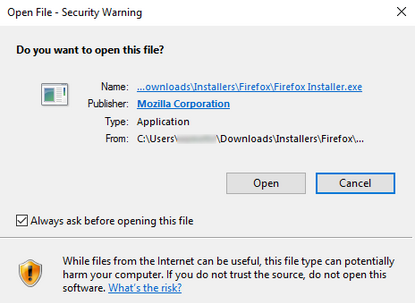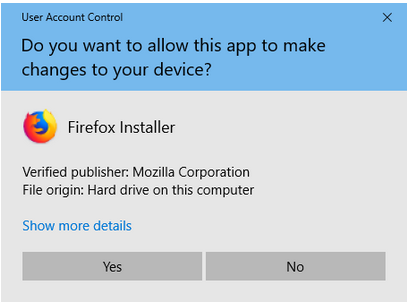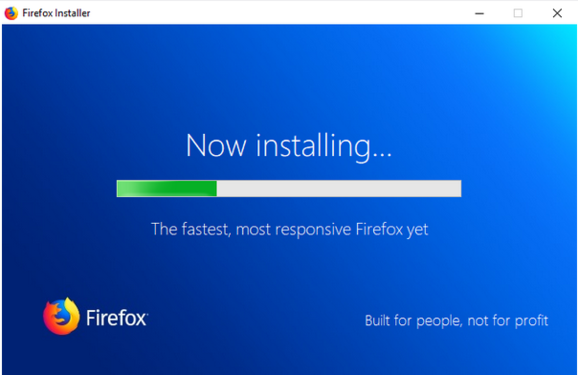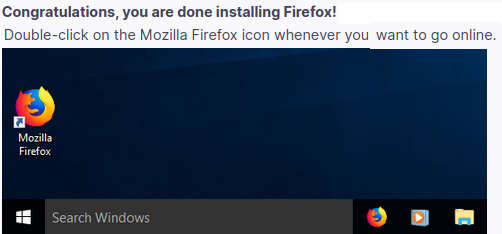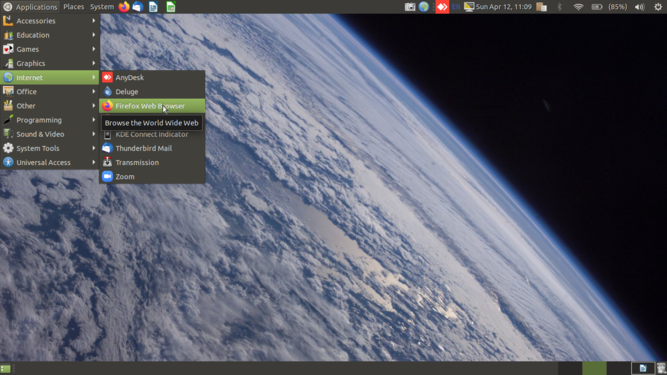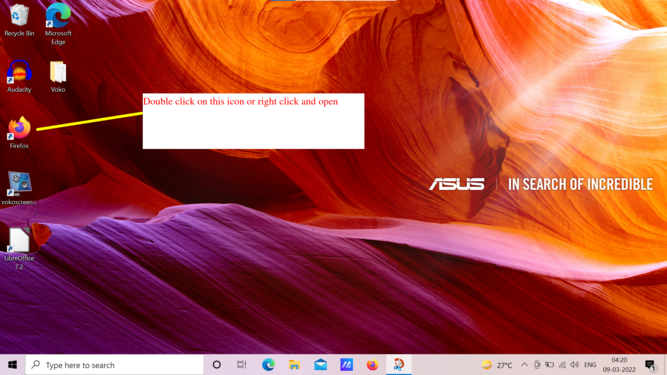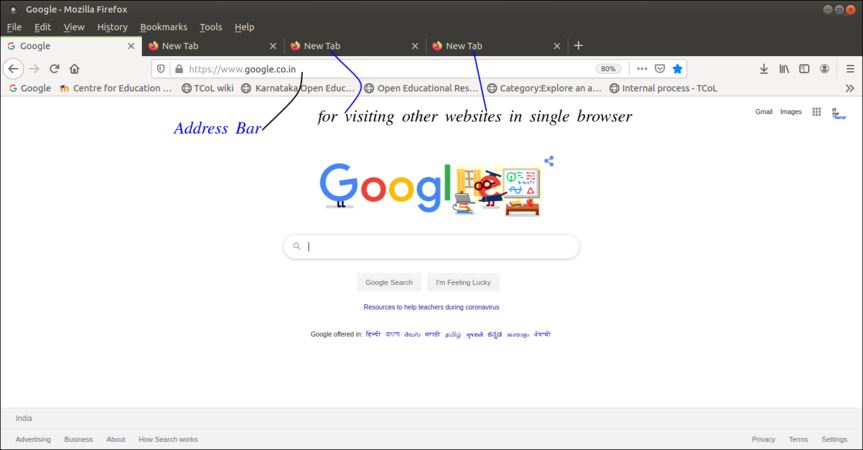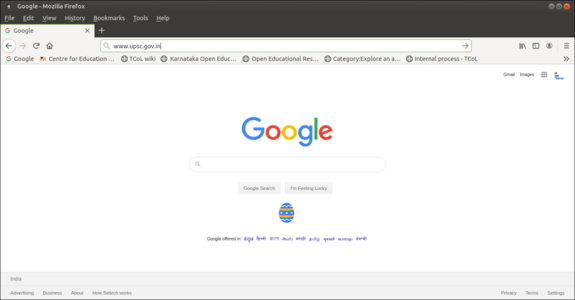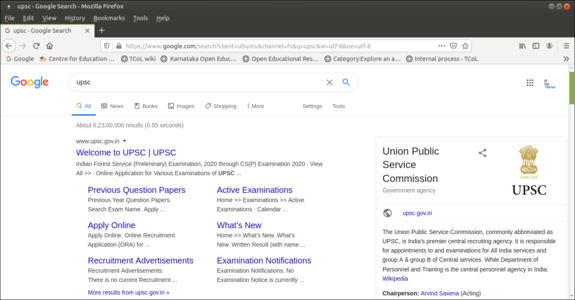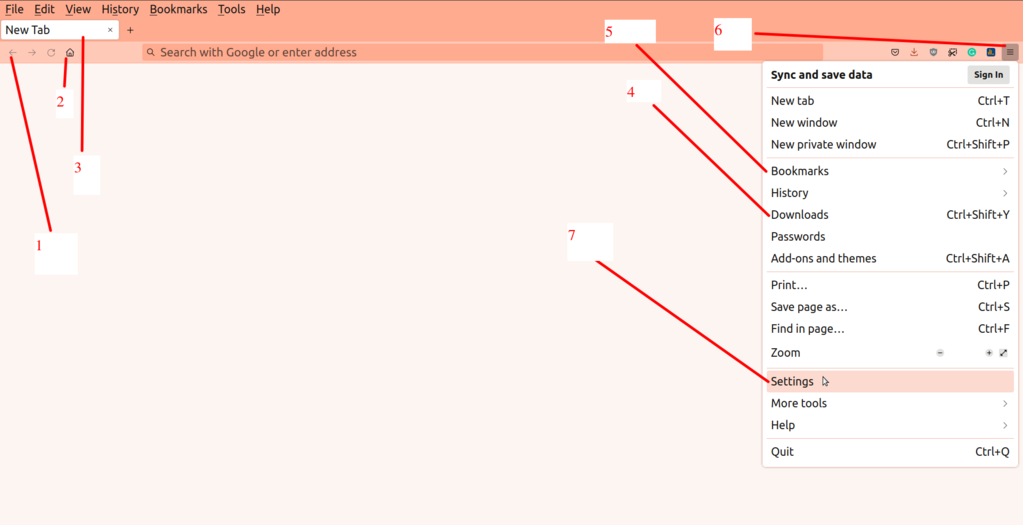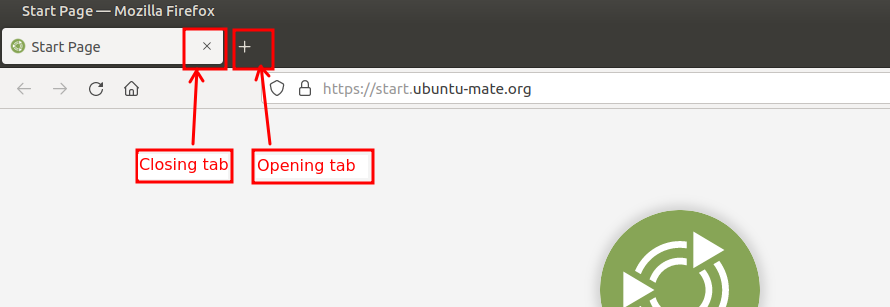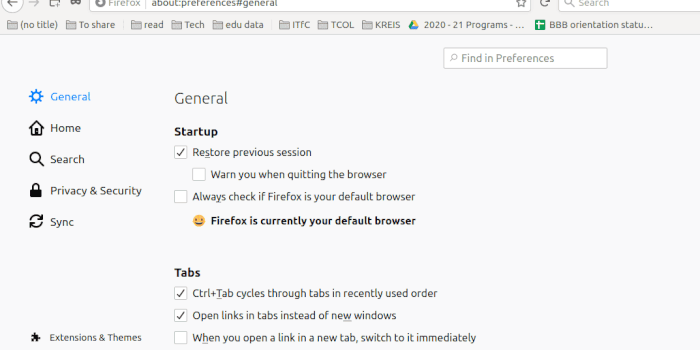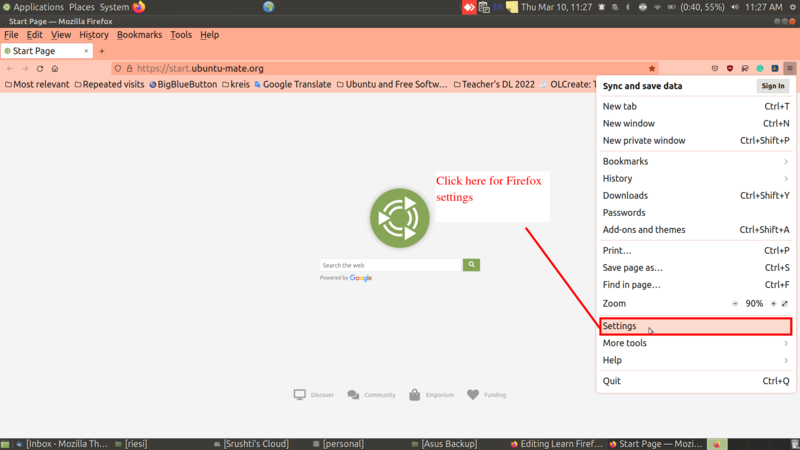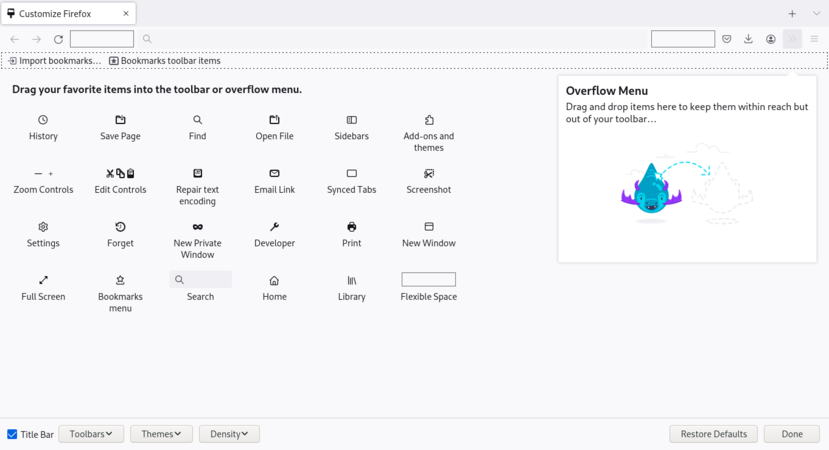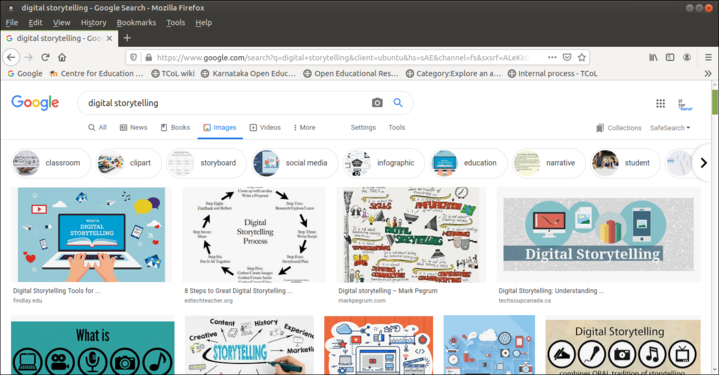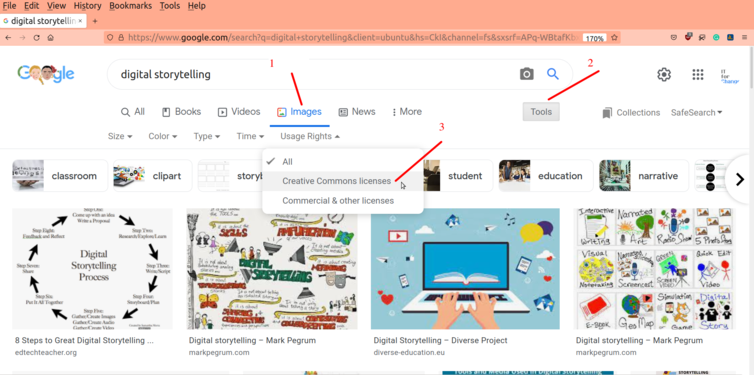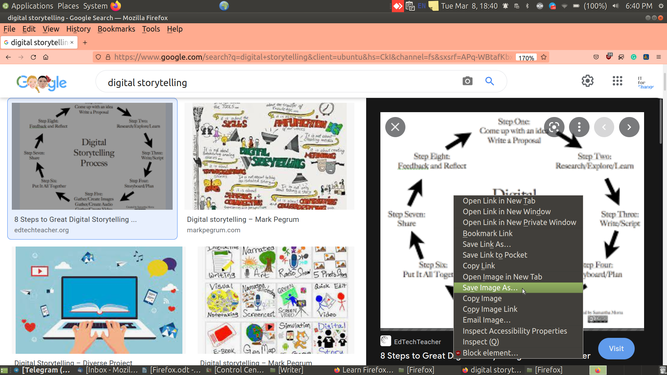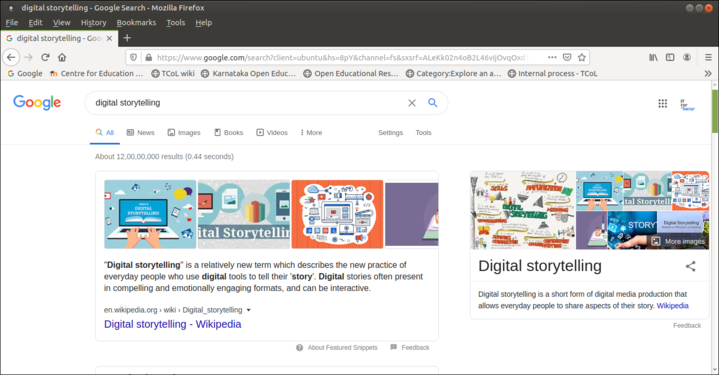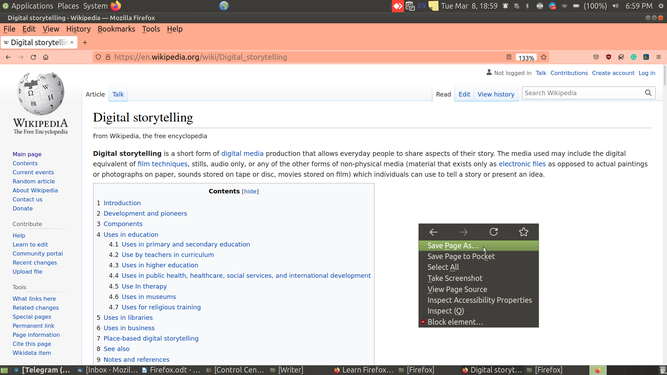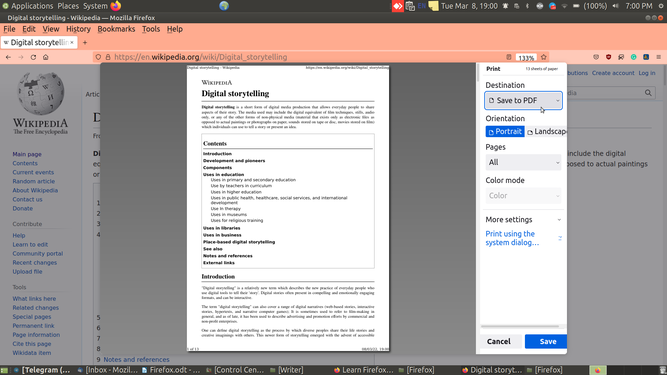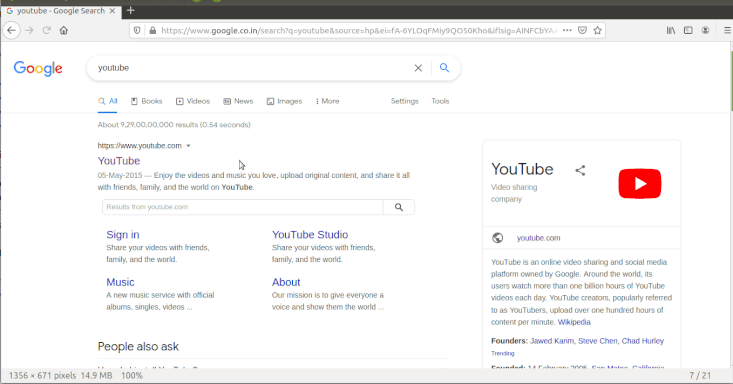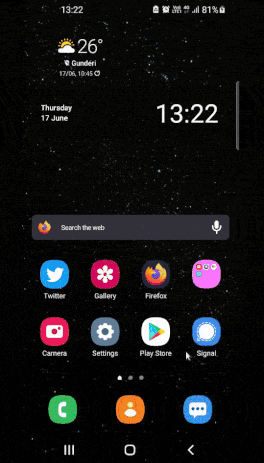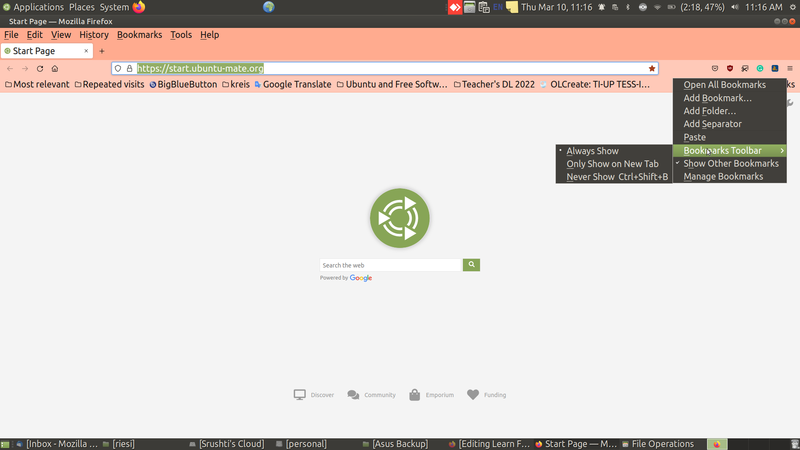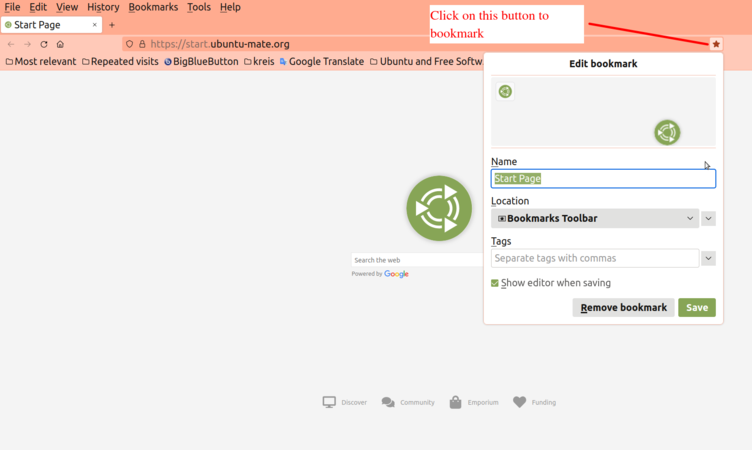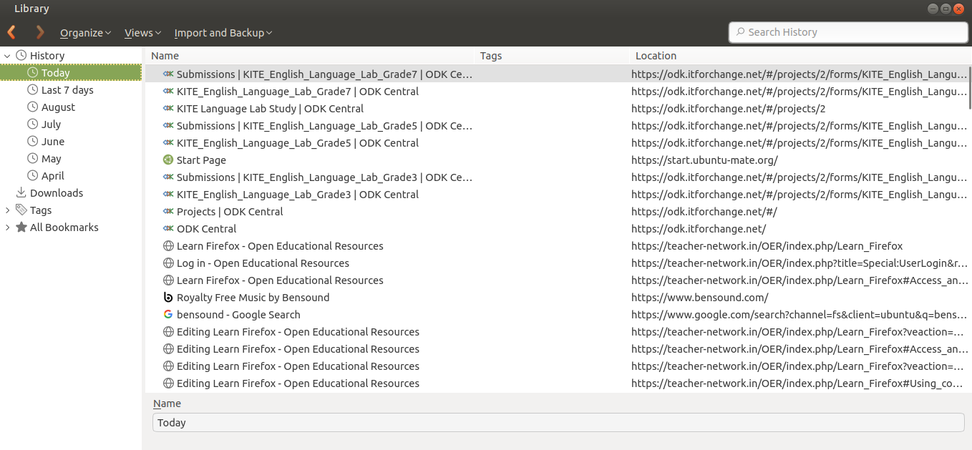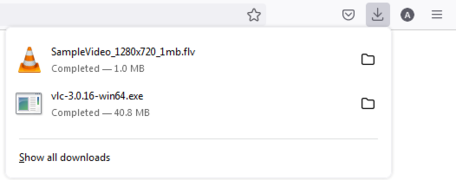Learn Firefox
Introduction
Mozilla Firefox (or simply Firefox) is a Free and Open Source web browser developed by the Mozilla Foundation and its subsidiary. Firefox is available for Linux, Windows and Mac OS operating systems; Firefox is also available for smartphones. It provides an interface between the server and the client and requests to the server for web documents and services to the client machines.
Basic information
| ICT Competency | Firefox is a Free and Open Source web browser for connecting and learning.
It is web browser (or Internet browser) to browse information and resources from the web. |
| Educational application and relevance | Accessing resources from the web for one's learning as a global digital library is one of the most important advantages of ICT. A browser is essential for accessing Information, downloading resources or participating in the virtual platforms on the web. |
| Version | Firefox 100.0.2 |
| Configuration | No need to configure, its a web based application and need internet connection to browse. |
| Other similar applications | Chromium, Brave |
| The application on mobiles and tablets | Android version for Firefox can be downloaded from Fdroid. |
| Development and community help | Mozilla Foundation and contributors - Mozilla Corporation |
Overview of Features
When we need any kind of information, digital resources or virtual support from the others or participating in the virtual platform, essentially we need to connect Internet/web. To connect to internet or web, we need web a software and that is web browser. Firefox is one of the most popular web browser which gives more stable and useful functionalities to connect to web.
For more detail visit this link
Installation
For Ubuntu OS
- The application is part of the Ubuntu custom distribution and any Linux based OS.
- If you would like to install through the terminal follow these steps below:
- Open terminal by clicking "Applications --> System Tools --> Terminal" or through Keyboard shortcut
Ctrl+Alt+T - In the terminal window, type the below command and press enter to start the installation by providing your machine password:
sudo apt-get install firefox
- Open terminal by clicking "Applications --> System Tools --> Terminal" or through Keyboard shortcut
For Windows OS
- Visit this Mozilla Firefox page in any other browser such as Microsoft Edge, Google Chrome.
- Click the "Download Now" button.The Firefox Installer that downloads will automatically offer you the best available version of Firefox for your computer.
- If you see an security Warning dialog, click "Open" or "Run" (see below images)
- The "User Account Control" dialog may open, to ask you to allow the Firefox Installer to make changes to your computer. If the below dialog box appears, click "YES" to start the installation.
- Wait for "Firefox" to finish the installation (In windows search bar, type firefox and click to open)
- When the installation is complete "Firefox" will open.
Watch this video tutorial on Firefox installation on Windows computer
For MAC OS
- Click here to open the download Firefox installation file for MAC OS.
- Click "Download Firefox" option.
- After completing the download, the file (Firefox.dmg) may open a Finder window containing the Firefox application. Drag the Firefox icon to the Applications folder.
Working with the application
Opening and accessing Firefox
- Mozilla Firefox will appear under "Applications --> Internet -->Firefox Web Browser".
- Main page will look like the third image. If you know the web address you can type it in the address bar. Ex; http://www.upsc.gov.in
- As shown in the firefox features
- Go back to previous visited page using this button
- Go to browser home page
- New tab is used to search multiple web pages in a browser
- Once you download any file, click on this button to check access your downloaded files.
- Bookmarks menu is available from here
- Application menu can be accessed using this button
- Click on settings button to change browser settings
- If you don’t know the particular web address, you can type the key word of searching object Ex: UPSC. you can search not only for text, but also for images, videos using search engine. In Google search engine (there are also other search engines like DuckDuckgo, Wikipedia etc), the search results has options for searching the web, or images or videos. You can download the file (video, text file, image file) to your computer. Check if the copyright of the file allows to copy and use.
- The search results will appear like in the third image. You can click on the links to access the information retrieved.
Tabs allow you to open and organize multiple websites inside a single Firefox window. This keeps your screen from getting filled fully and makes it easy to switch between sites.
As indicated in the image above, '+' option lets you to open a new tab. Alternatively you can press "Ctrl+T" to open the new tab and to close any particular tab click on 'X' mark on the side of the tab indicates, alternatively you can press "Ctrl+W" on the keyboard.
Opening a new tabs is very useful feature when you searched for a topic and not sure the result link might end up your search. In such case you can right click on that link and click on "Open in a new tab", just to avoid going back to the searched result in the same page.
Changing browser default homepage
Set your favorite/most accessible website as your homepage so you can see it every time you open Firefox.
- Click the menu button at the top-right corner of the browser, then Settings
- Click "General", Click on the box next to "Homepage and new windows" and choose "custom URLs" from the drop-down menu (see the below gif).
- Enter a URL which you want to make it default home page (example: https://duckduckgo.com) in new window and tabs.
- Close your browser and open your browser to apply the changes you have done.
Default Search Engine
Search engine produces the number of results for any topics that you search for. In Firefox you can set particular search engine as your default one so that whenever you search for a particular topic, it would redirect you to the search result in accordance to that default search engine. Try to use search engine which will not share your data to the public or for the commercial purpose. You can use DuckDuckGo search engine. DuckDuckGo does not store IP addresses or user information. Billed as the search engine that doesn't track you, DuckDuckGo processes around 1.5 billion searches every month.
To do this, click on "Settings in the firefox browser --> Click Search tab on left --> In the Default Search Engine option choose the required search engine".
Customizing toolbar
Firefox's toolbar provides easy access to common features. The toolbar is easy to customize. You can change the items that appear in the menu or your toolbar. Click the "Menu" button , click "More Tools" and choose "Customize Toolbar".
A special tab will open which allows you to drag and drop items in or out of the menu and the toolbar. Feel free to experiment with what works best for you. You can always start over by clicking the Restore Defaults button at the bottom of the screen.
Searching Image resources
- You can search and download the images from Firefox web browser.
- For example: If you want to search images about Digital Story Telling you can follow these steps.
- Simply type "Digital Story Telling" in the search bar of the search engine.
- Select "Images" tab from the top tab of the search engine.
- If you want to download or save images to your computer, click on the images and once it open on the right side of the window, right click on the image and click on "Save image as".
- Rename the image file and select appropriate folder to save.
- Searching for resources from web
Accessing and Downloading OER images from web
All the content which are available on internet need not be open. Open in the sense of accessing and using the resources. Some of them could be copyrighted. Therefore, you need to be careful while accessing some particular content in the internet.
OER stands for Open Educational Resources, that are open to public for using, changing, reproducing and publishing the reproduced content. This is applicable for text, image and audio or video.
- You can search for OER images from Firefox web browser, For example: If you want to search images about Digital Story Telling, simply type "Digital Story Telling" in the search bar of the search engine and select ‘Images’ link.
- Click on "Tools". Here you can work with various filtering options such as size, color, type, time, usage rights.
- Under usage rights select creative commons licenses to filter OER images.
If you want to download or save images to your computer, right click on the image and click on "Save image as". Rename the image file and select appropriate folder to save.
![]() Note: Filtering the images makes your search more optimized. For example you need a picture of planet Earth, but your color preference is Orange not Blue. In such case you can click on "Tools --> Color --> Pick up the color Orange".
Note: Filtering the images makes your search more optimized. For example you need a picture of planet Earth, but your color preference is Orange not Blue. In such case you can click on "Tools --> Color --> Pick up the color Orange".
- Searching for OER image resources from the INTERNET
You can also download the images from other web repositories such as Wikimedia and Creative Commons.
Wikimedia being a sister website of Wikipedia stores the OER images in a broader context. Users are allowed to upload their images and can explore much more options here. In Creative Commons, you can search for "CC images" which allows user to filter the choice based on their requirement.
Accessing and downloading text resources from web
You could look for text information by simply typing the key word of your searching content, In the below image (Image1) you can see text information accessed for "Digital Story Telling" in the search bar of the search engine.
You can search the content in larger OER repositories like Wikipedia, OER commons, KOER.
Wikipedia, being one of the largest free text resource repository gives you enough of information related to almost everything all over the globe. As you search for a particular topic in Wikipedia, the search bar shows the pages related to your searches which you can choose and click which is most relevant to you. You can select some or any portion of the text, copy those and paste it in the text editor for the future reference.
You can save webpages in 3 formats to use in offline mode without the need of having internet connection.
- Save as HTML: If you are looking to save any webpage in HTML format for your offline use, right click on the "webpage" and click on "Save page as" and select a folder where you want to save this file and click on "Save". Videos in the webpage will not be loaded in HTML format.
- Save as PDF: If you are looking to save any webpage in PDF format for your offline use, Click on "Application" menu and goto "Print" and select "Save as PDF" to save your file. Please note that video content will not work in this format. This format is specifically used for sharing the content or to take the print out of the text.
- Save the screenshot : This is a special feature on Firefox that saves the required data as per your needs.
- Full Page: If you need the entire webpage but need it to be as an image then you can select the Full page option in the screenshot. Although the image looks very small the original clarity will not be affected so that you can zoom the image and get the clarity as in the original format.
- Visible : If you want only the visible thing on the webpage to be captured as an image then you can select the option visible.
- Area : If you are looking for a particular area of data in a webpage then you can drag the cursor to the area which needs to be captured.
Accessing and downloading Audio resources
Audio plays an important role in any multimedia form. Voice and Music makes any content more richer and interesting.
You can listen and download the OER Audio resources from some of the sites like Bensound. Basically bensound makes you listen and download the OER music files which you can use for any purpose.
Accessing and downloading videos from YouTube
Using computer
YouTube is the largest video repository we have on internet. The videos can be watched on YouTube by simply going to the URL of youtube, that is "www.youtube.com" and on the search bar searching the content which is relevant to you. Once you search your topic you would get a list of result from various YouTube channels.
Immediately below the the search result you can find the filter option where you can filter out only the things you require. There is an option "Creative Commons" which allows you to freely download the videos of OER content that can further be modified and used according to the user needs.
The following animation will teach you how to use the "ss" prefix to easily download YouTube videos:
- Go to your browser and find the video you want to download from YouTube.
- Click a video to play it, then pause it.
- Navigate to the video URL, add "ss" before "youtube.com ..." and press Enter.
- You will be redirected to another page where you can save the video.
- This page is the parent site of ssyoutube.com known as savefrom.net.
- You will find out information such as duration, title of the video, and also get a download link.
- To the right of the green download icon, you will see a drop-down menu. Click on it and select the format in which you want to download the video (with or without sound).
![]() Note: To download OER videos from the internet you can follow these steps:
Note: To download OER videos from the internet you can follow these steps:
- Go to Youtube website and search for your required video.
- Click on "Filters" option.
- You can explore various filtering options available such as upload date, type, duration, features, sort by. In case of OER videos, click on "Creative Commons" under the "Features" category.
- It filters and displays only the OER videos
Alternatively, you can watch the videos on Vimeo, Wikimedia Commons, Archive.
Using Mobile phone
Using Bookmark feature to save useful webpages links
All modern web browsers include bookmark features. Bookmarks are also called "Favorites". You can use this features to store all your website links within the firefox browser. This will help you to access these links when required.
To add any links to the bookmark section, Go to "Menu Bar" and click the bookmarks and click on "Add this to bookmarks" to save the current page as a bookmark. By default, new bookmarks are saved to the Unsorted bookmarks folder. If you want separate folder, you can also create as per our requirements.
To enable bookmark : Right clicking on the free tab space of the browser like shown in the below screenshot.
In Bookmark menu You can add name to the bookmark, Add location where to save it and also you can give tags so that it will be easy to search web pages.
Using History feature to revisit the webpages
Firefox keeps track of the websites you visit in your browsing sessions.
To view your browsing history:
- Click on the "Application" menu button to open the menu panel. Click "History" and then click the "Manage History" bar at the bottom to open the Library window.The Library window that opens when you click the Manage History bar will show your browsing history.
- Left side pane shows you the time of the access and corresponding right side pane shows the detailed description of the webpage you visited those respective time. Therefore, if you have visited a page on a particular day but you are unaware of the URL, you can just choose the History date and can refer the page.
Accessing downloaded files
By default in firefox browser the download path or download folder is downloads folder in your computer (means if you download any resource from the internet it is saved in downloads folder). You can locate the downloaded files from that folder.
Suppose if you want to change the download path settings then click on application menu at the top right side of the screen and go to settings ("Application menu --> Settings --> General section --> Files and Applications"). You will get two options here, one is to "Save files to where you can browse your folder" and set the download path and another is to "Always ask you where to save files" using which you can save files to the selected folders.
Keyboard Shortcuts
Shortcuts help us to do our work much faster, you can access all the Firefox browser shortcut keys from this link
Ctrl++ Zoom-in
Ctrl-- Zoom out
Ctrl+F Find
Ctrl+C Copy
Ctrl+X Cut
Ctrl+V Paste
Ctrl+H History
Ctrl+Z Undo
Ctrl+D Bookmark webpage
Advanced features
- Open Source : Firefox is the only open source Web browser among the most used browsers on the Web as of March 2013. The open source nature of Firefox enables developers from all over the world to contribute code to the browser and extend the functionality of Firefox with add-ons and themes.
- Add-ons : Firefox is one of the most easily customized browsers, thanks to its extensive library of add-ons. Add-ons are small bits of code that can extend the functionality of Firefox in an almost infinite number of ways. You can customize your browser with a couple of addons that makes your browser more rich and advanced.
For example, you can block the advertisements that disturb your work while surfing on internet by embedding an addon called Adblocker Ultimate.
- Security : Firefox features a number of tools designed to prevent malicious websites from causing harm.
- Android version for Firefox can be downloaded from Fdroid.
Ideas for resource creation
From the web browser, we can easily download whatever we want related to the subject (text,audio-video) and use them for any Resource creation such as presentation, video, document etc.
